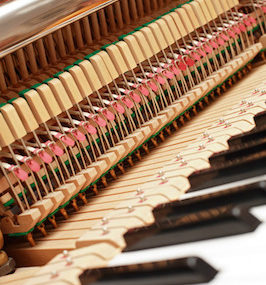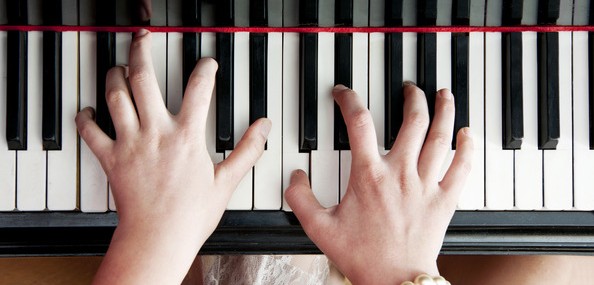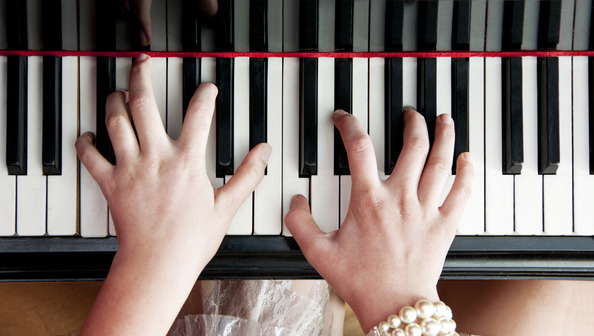If you look around your home, you’ll find wood is used in many ways, and comes from a variety of sources. You may have oak flooring, maple cabinets, and cedar in your drawers. For many of the items in your home, woods are interchangeable; you can use everything from birch, fir, mahogany, cherry or spruce to add a personal touch to your rooms. 
But how about your piano? What type of wood is best for creating a piano?
It’s not so much what wood is selected as the process that is used to ensure the wood is properly treated before it is used to build a piano.
After logs are harvested, they are sawed into planks, soaked in hot water to soften, then peeled to produce the veneer for the exterior case. It is then put through a drying process which can last from 6 months to two years, depending on how the parts will be used. This drying process is a crucial step. If not dried properly, the wood can warp and crack over time.
In many cases, would is put through a process of air drying, then kiln dried bringing it down to as low as a 7 percent factor. It is often seasoned again before bringing it indoors to acclimate to its indoor climate.
It’s a specialized process selecting the right wood. That’s what separates the manufacturers and gives each piano its own unique look and sound. Selecting wood takes a trained eye. It has to be able to be molded, closed, selected for its ability to be heat resistant and accept mild humidity changes without impact. And while many different kinds of woods can be used for the outside, in general, spruce is used for the soundboard.
Spruce has high elasticity and is the most reverberant. Spruce is harvested when the sap is at the lowest content, with the manufacturer carefully selecting boards that can withstand environmental changes. Poor quality soundboards will straighten over time and lose tonal quality. So it’s important that they have the right grain for viability.
Maple is usually used for creating the bridges and the pinblock. The bridge transfers the strings energy to the soundboard. Strength is needed to ensure the strings’ vibration is transferred efficiently. Maple is a hardwood that ensures a high degree of tuning stability over long periods of time, making it the perfect choice for the pinblock.
Maple is also one of the best choices for the action mechanism. The action parts are a key component to a piano; precision is key. Which is why the quality of the wood is important for it to withstand constant friction and be durable over time.


 Maple is a very strong wood that can be moulded to form the intricate action parts within a piano. It has a tight, straight grain that gives a piano shape retention and durability. It also gives a vice-like grip on things like tuning pins and bridge pins.
Maple is a very strong wood that can be moulded to form the intricate action parts within a piano. It has a tight, straight grain that gives a piano shape retention and durability. It also gives a vice-like grip on things like tuning pins and bridge pins.
